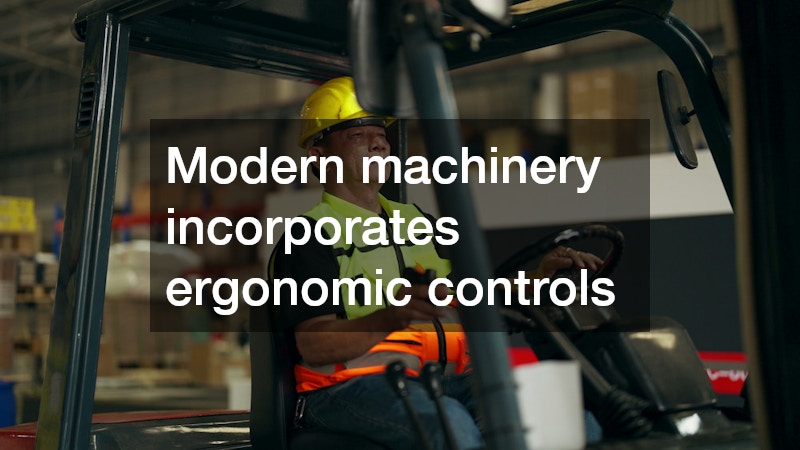In industrial and construction settings, handling heavy loads safely is a critical concern. Workplace accidents not only endanger employees but also result in costly downtime and equipment damage. The development of advanced heavy load handling equipment has revolutionized the way industries manage large, cumbersome materials. By integrating cutting-edge technologies, modern equipment not only improves efficiency but also prioritizes safety for operators and staff.
Understanding these innovations is key for businesses looking to enhance workplace safety while maintaining productivity.
Automation and Robotics
One of the most significant trends in heavy load handling equipment is the incorporation of automation and robotics. Automated systems reduce the need for manual labor when moving large items, minimizing the risk of human error. Robotic cranes, forklifts, and palletizers are designed to handle precise movements with minimal supervision, ensuring that heavy materials are lifted, transported, and placed safely. These systems often include sensors and safety protocols that detect obstacles, prevent collisions, and automatically adjust load distribution, significantly reducing workplace accidents.
Automation in handling equipment also allows for repetitive tasks to be performed consistently and efficiently. This consistency is crucial in industries like manufacturing, logistics, and warehousing, where even minor mishandling can lead to product damage or injury. Companies investing in these advanced systems are not only protecting their workforce but also improving overall operational efficiency.
Ergonomic Design Enhancements
Another key innovation in heavy load handling equipment is the focus on ergonomics. Traditional equipment often places significant physical strain on operators, contributing to fatigue and injury. Modern machinery incorporates ergonomic controls, adjustable seating, and intuitive interfaces that reduce strain on operators and enhance precision. For instance, joystick-operated cranes and forklifts with customizable control layouts allow workers to maneuver heavy loads more comfortably and safely.
Ergonomic improvements also extend to the design of attachments and lifting mechanisms. Adjustable lifting heights, counterbalanced systems, and shock-absorbing components reduce the physical stress of handling heavy loads. These features not only protect employees but also enhance productivity by allowing operators to work longer with less fatigue.
Advanced Safety Features
Safety has always been a primary concern in heavy load handling, and recent innovations have taken this focus to a new level. Modern heavy load handling equipment often includes advanced sensors, cameras, and AI-driven monitoring systems that detect potential hazards before they become critical issues. Load moment indicators, anti-tip devices, and automated braking systems are now standard on many types of equipment, providing real-time feedback to operators and supervisors.
These technologies help prevent accidents caused by overloading, uneven weight distribution, or operator error. Additionally, integrated communication systems allow teams to coordinate complex lifts safely, reducing the likelihood of collisions and mishandling. By investing in equipment with these advanced safety features, companies can significantly lower workplace injury rates and promote a culture of safety.
Energy Efficiency and Environmental Considerations
Innovations in heavy load handling equipment are not limited to safety alone; energy efficiency and sustainability are also key areas of advancement. Electric and hybrid-powered forklifts, cranes, and transport vehicles reduce emissions and minimize environmental impact. Many of these systems also incorporate regenerative braking and energy recovery technologies, lowering operational costs while maintaining high performance.
Energy-efficient equipment often comes with smart monitoring systems that track performance and optimize power usage. By combining safety, efficiency, and sustainability, these innovations help businesses meet regulatory standards and demonstrate corporate responsibility, all while maintaining the capability to handle heavy loads effectively.
Training and Simulation Technology
Even the most advanced heavy load handling equipment requires skilled operators to maximize safety and efficiency. To address this, industries are increasingly adopting virtual reality (VR) and simulation-based training programs. These programs allow operators to practice handling heavy loads in a controlled, risk-free environment, improving their skills before they operate real machinery.
Simulation technology can replicate various workplace scenarios, including emergencies, equipment malfunctions, and complex lifting operations. By incorporating VR and training simulations into their programs, companies can reduce the likelihood of accidents and improve operator confidence and competence.
The evolution of handling equipment is transforming industrial workplaces, combining efficiency, ergonomics, and cutting-edge safety features to protect workers while optimizing operations. From automation and robotics to advanced safety sensors, energy-efficient systems, and training technologies, these innovations ensure that heavy loads are managed with precision and care.
Investing in modern heavy load handling equipment is more than a productivity decision—it is a commitment to workplace safety. Companies that embrace these advancements not only reduce the risk of injury but also foster a safer, more efficient, and forward-thinking work environment. As technology continues to evolve, businesses that prioritize innovative solutions will be better positioned to meet both operational and safety goals in the years ahead.

